A wet day was forecast, so I suggested to Bob that rather than head up the mountains, that we do a walk in the Bantry Bay area, and while there we could look for some Aboriginal sites. I knew about an engraving site near the Wakehurst Parkway. Bob did some research and found there were other sites nearby that sounded well worth looking for.
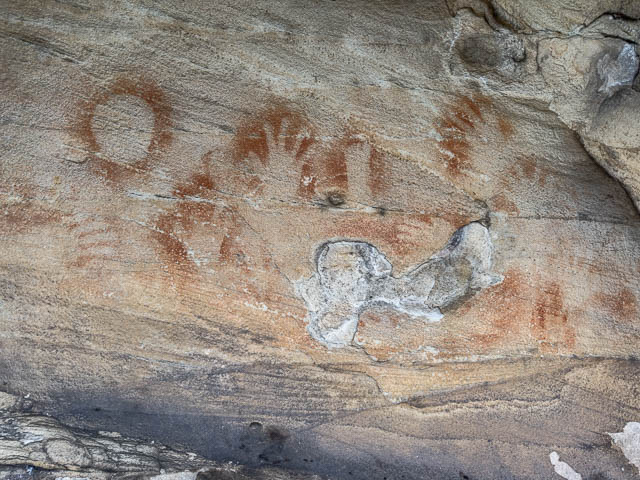
For rock engravings, they are often a lot easier to discern if the rock is wet. Sometimes we have used a water bottle and poured water over part of a rock platform and magically an engraving has appeared. But if it is raining, then you don’t need to add water.
We had light rain for the first part of our walk, then a bit more later on.
Bob parked at the sports field at the end of Currie Road, Forestville, and we soon walked up to a track parallel to Wakehurt Parkway, and it was not far to the first engraving site. This was a large rock platform. It was covered in engravings.
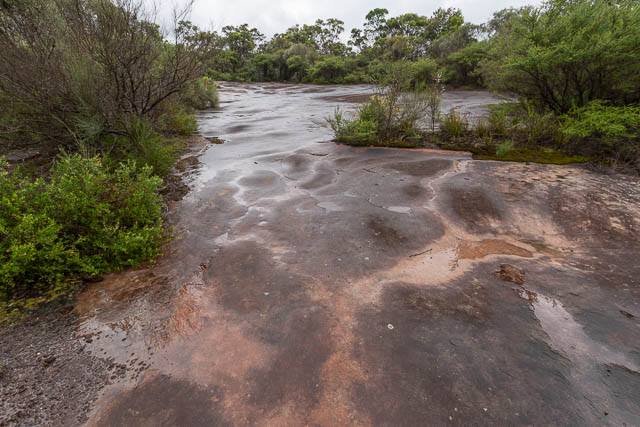
Here are three fish –
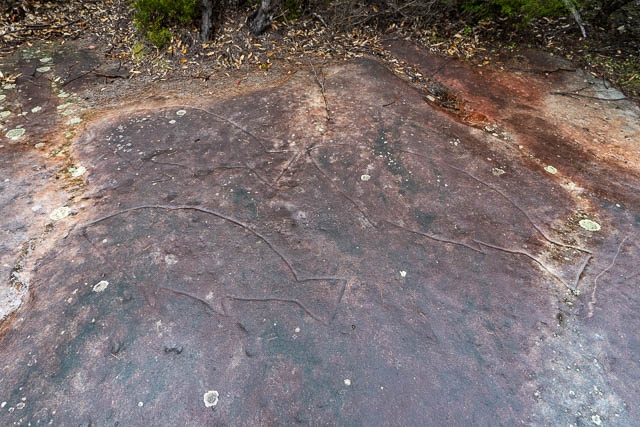
One of many shields –
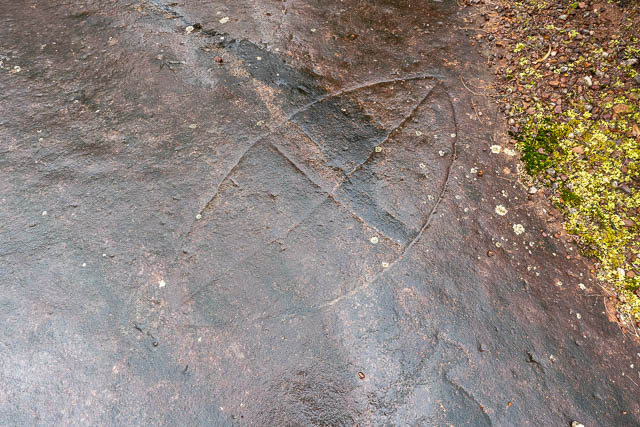
Another shield and two boomerangs –
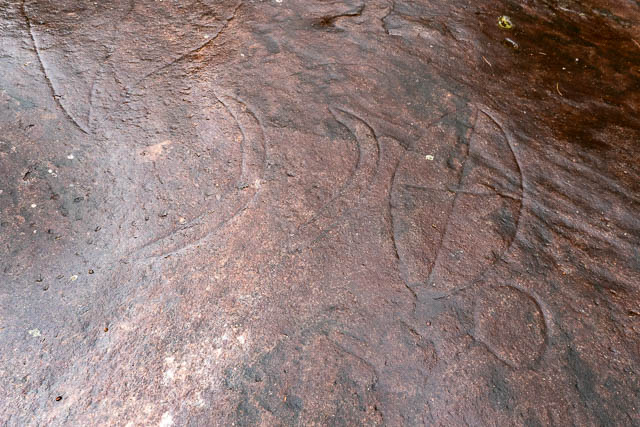
There is a faint human figure here –
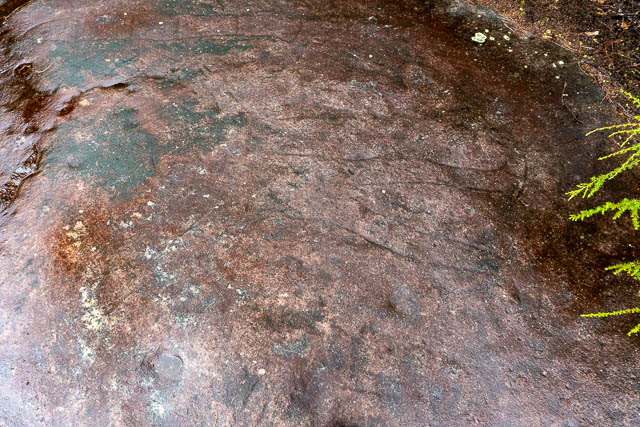
Here is an animal –
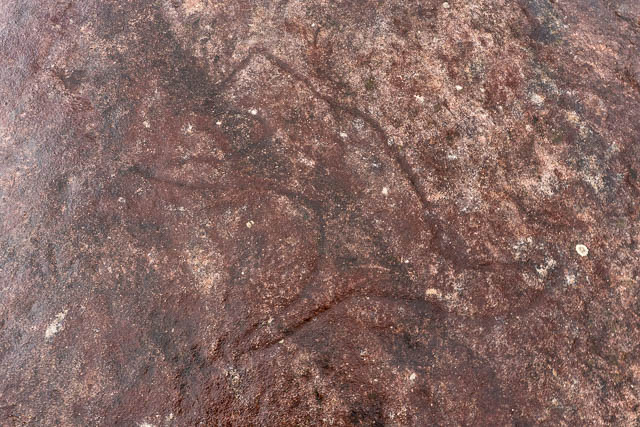
Here there is a very large whale –
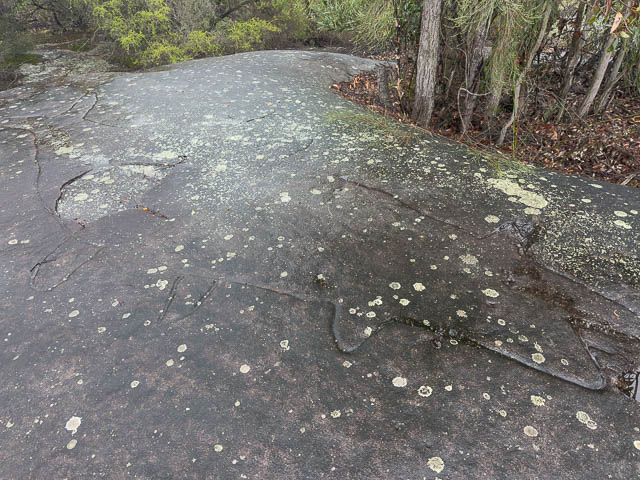
And a human figure –
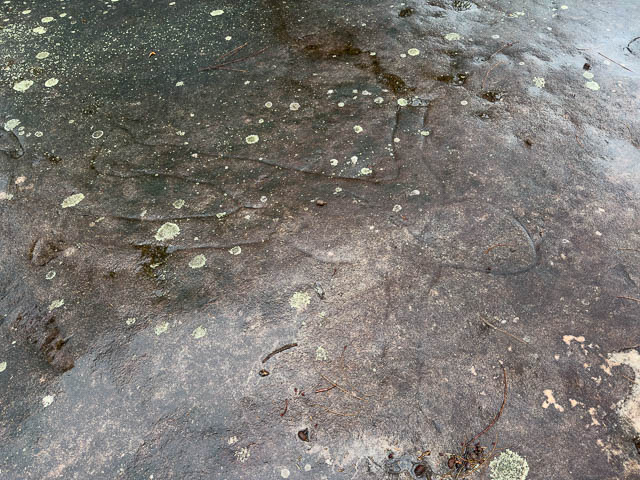
Perhaps an eel –
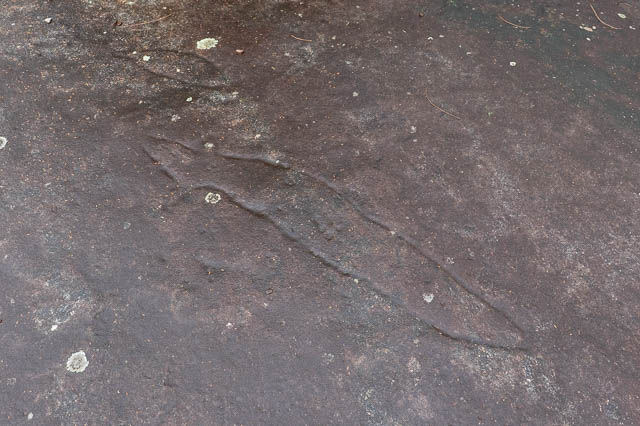
There was a lot more at this site than is shown here. See here for example.
We then continued on, walking towards Seaforth Oval.
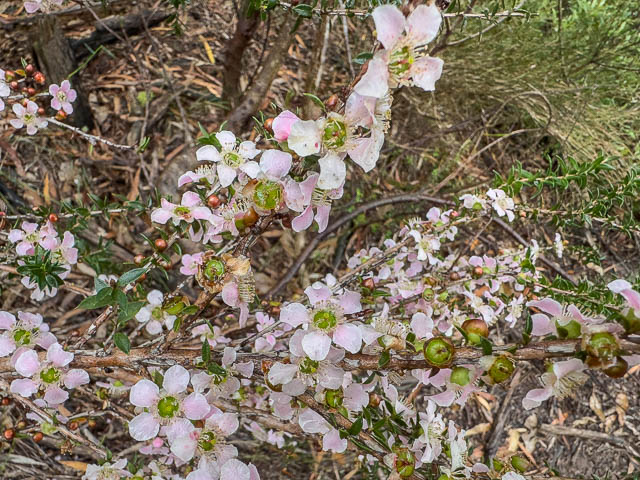
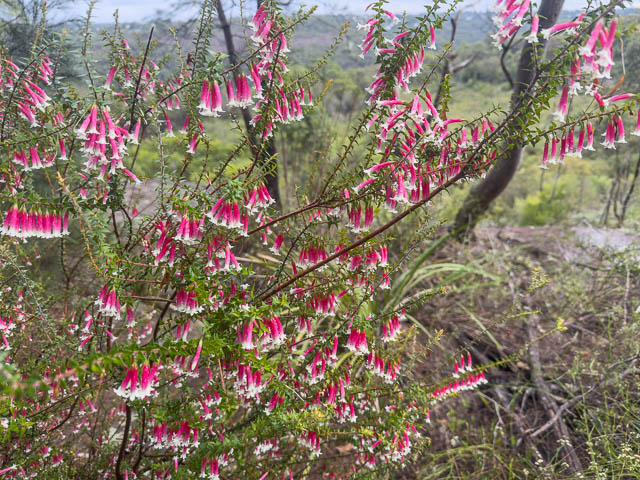
We then followed the Timber Getters Track down to Bantry Bay. This historic track crosses an old bullock track that was used to get timber down to the bay for transportation. The timber came from the forests of Forestville and Frenches Forest.
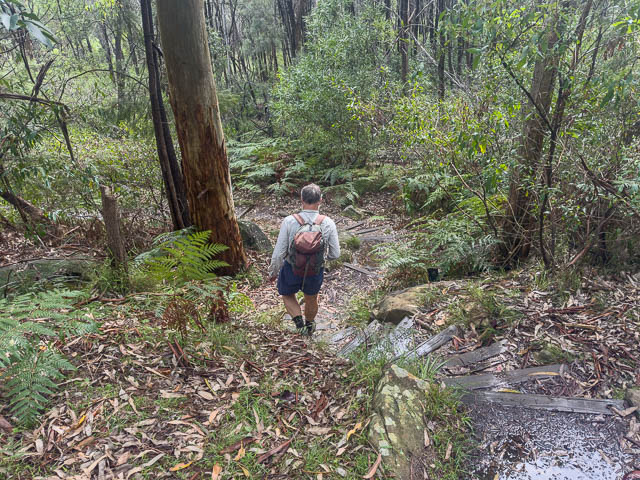
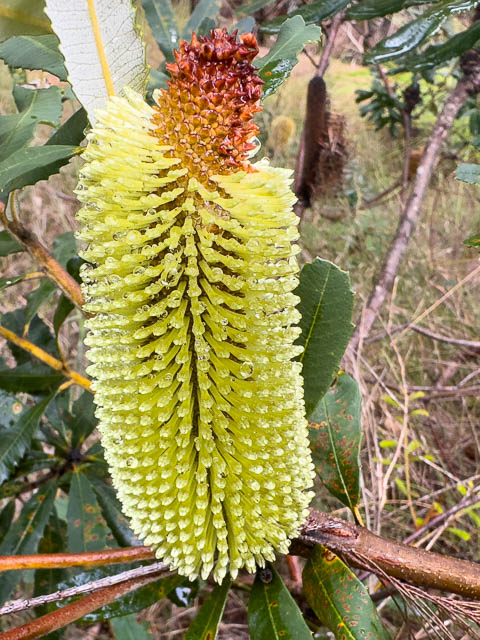
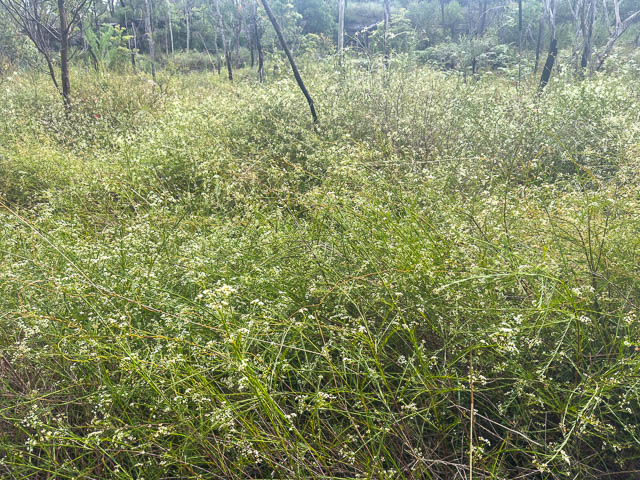
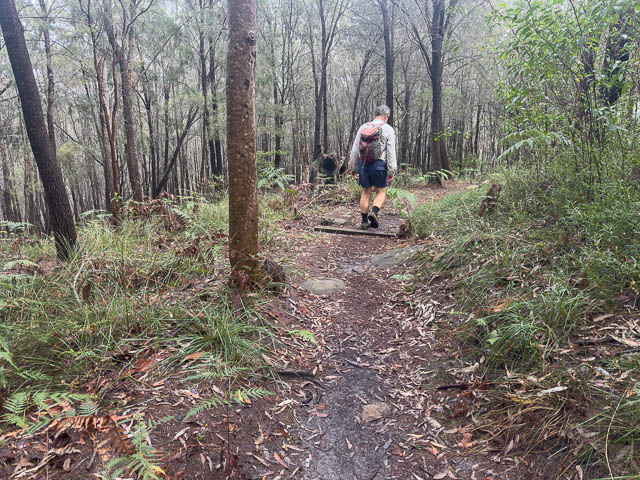
Looking down we could see some old buildings.
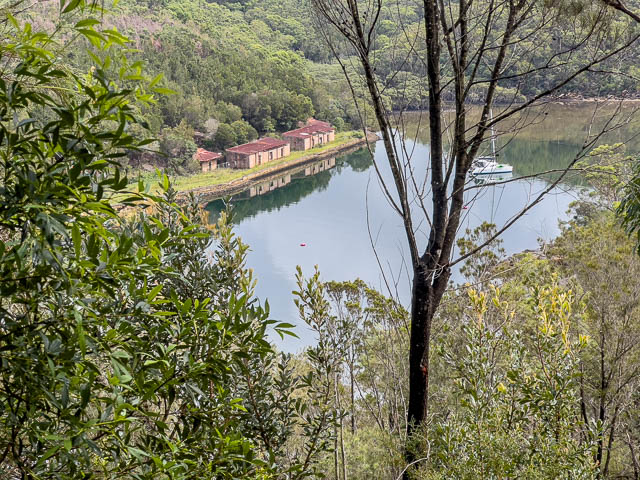
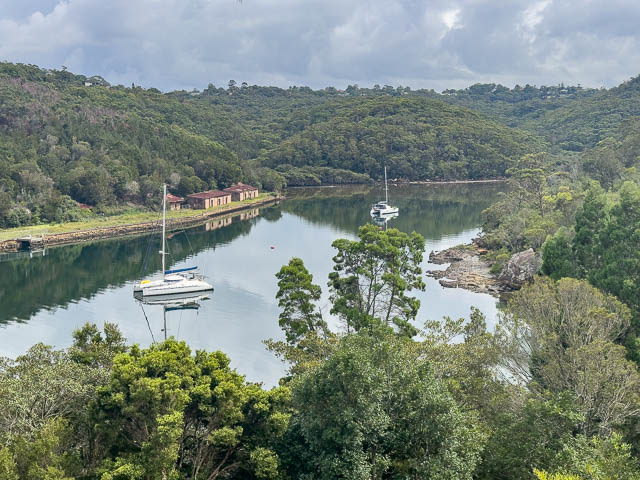
At the bottom is a picnic area and small toilet block.
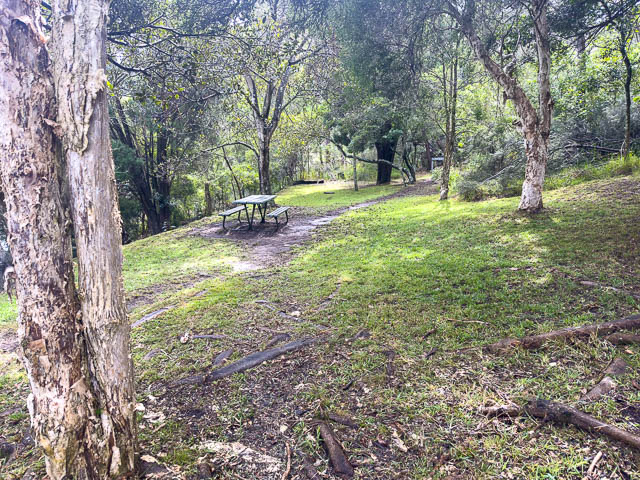
There is also a wharf – Bantry Bay Wharf.
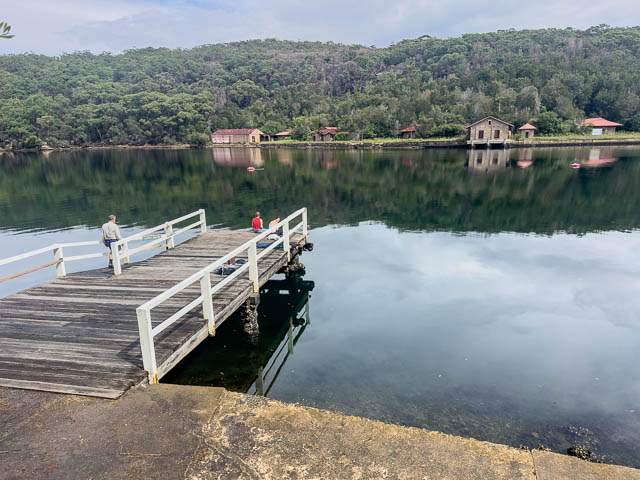
Looking down Banty Bay – it looks remote!
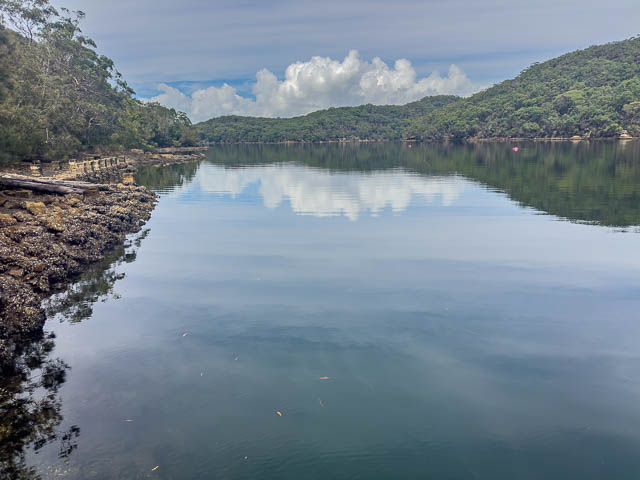
It was this remoteness that led to the bay being used from 1906 until 1974 for an explosives magazine. This is what the buildings on the far side were once used for.
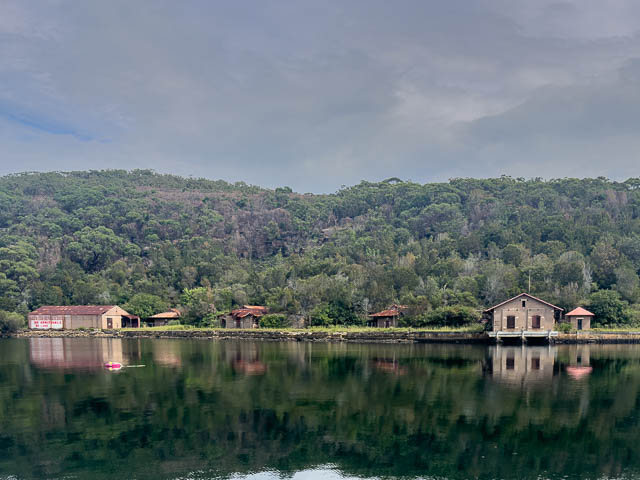
After a break, we continued walking on the Bluff Track, that goes up Bantry Bay.
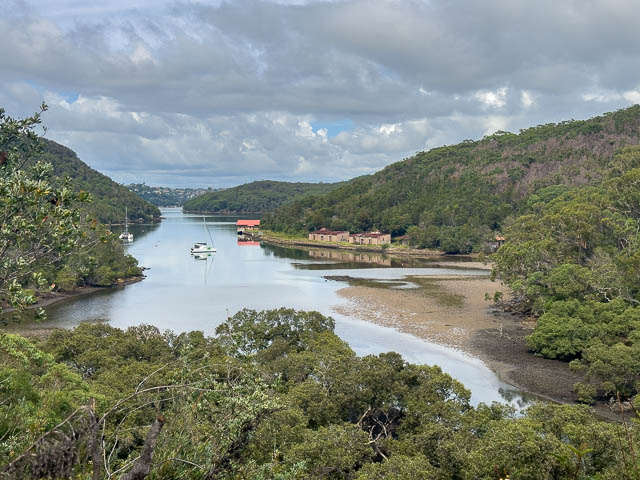
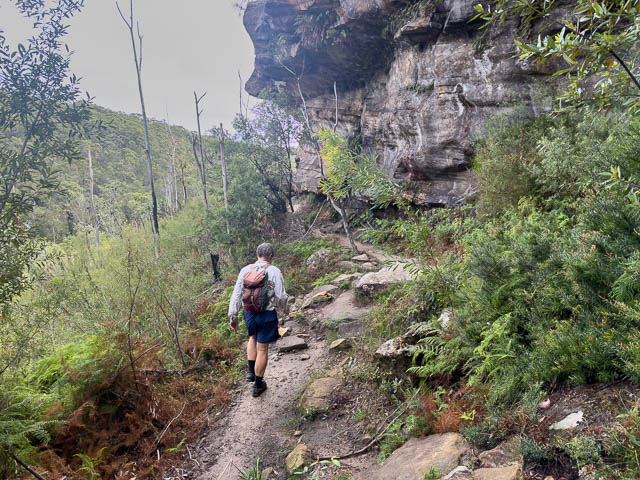
Here, we could look up and see the bluff –
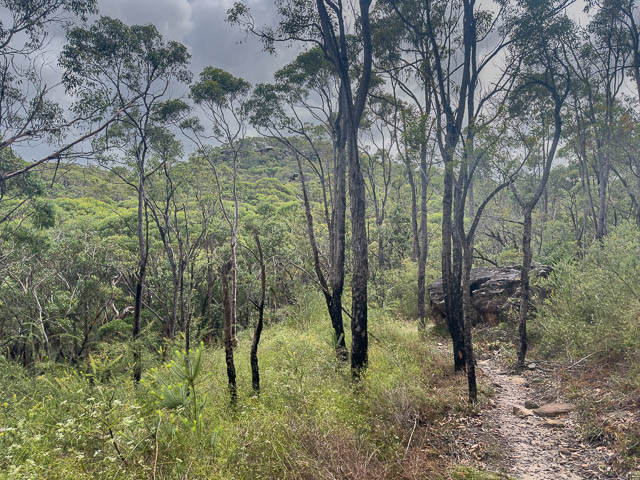
We stopped for lunch at this interesting lower bluff.
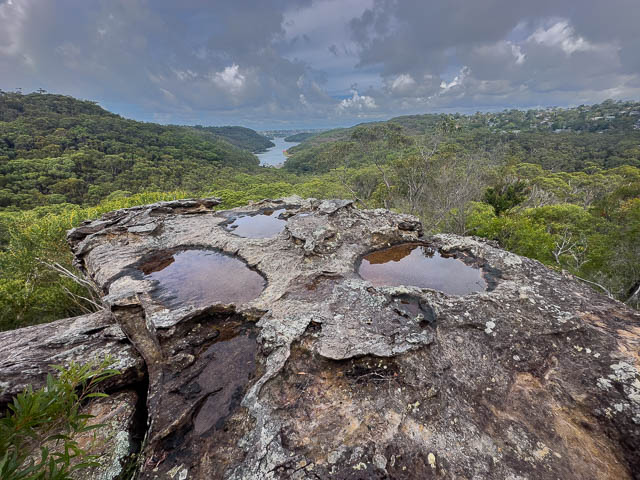
We then looked for an found an Aboriginal art site. It is a cave that features two echidna engravings on a rock on the floor.
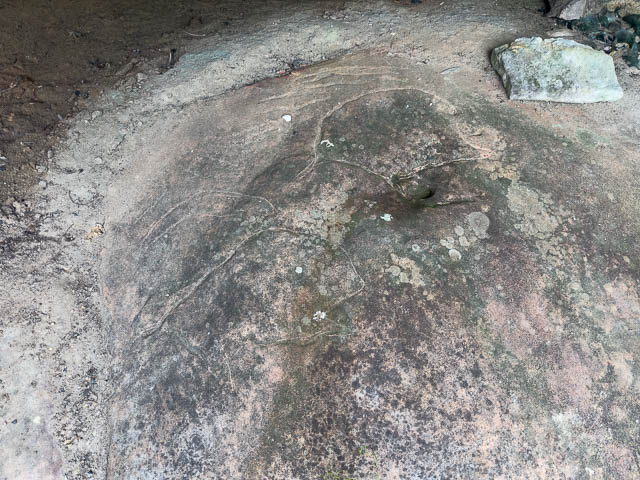
This cave was found and recorded by amateur anthropologist, Michael Guider, in 1981, when he looked for a cave to shelter during a storm. Unfortunately, Michael Guider, also had some other rather sinister hobbies.
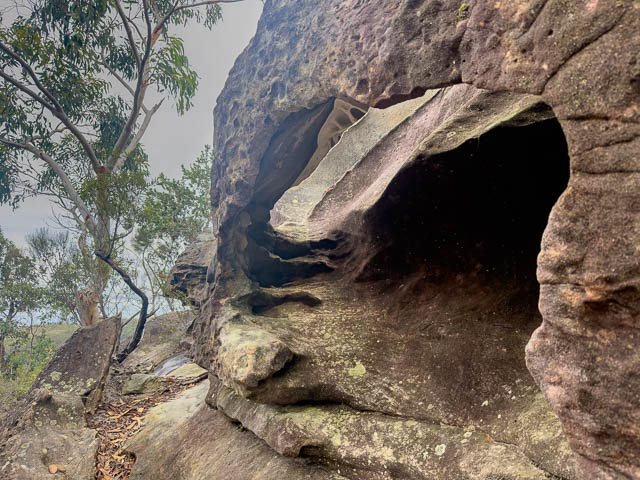
We continued up to the Bluff.
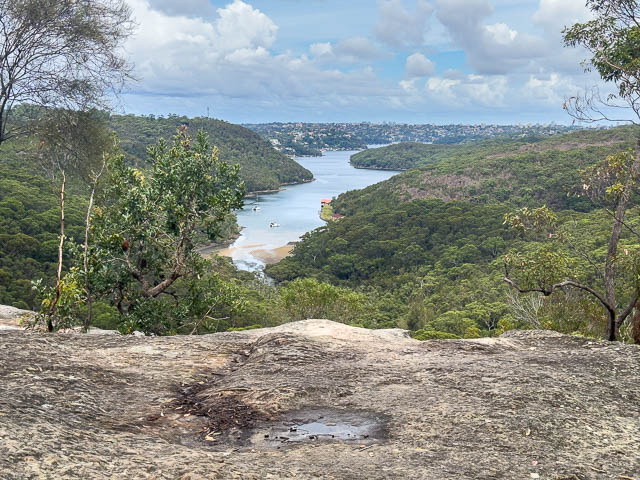
The next site we looked for was a cave containing some hand stencils and other ochre art. We soon found the cave. The art was in very good condition.
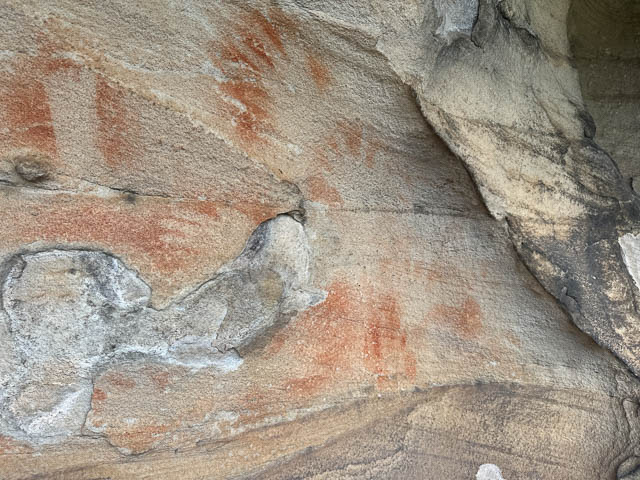
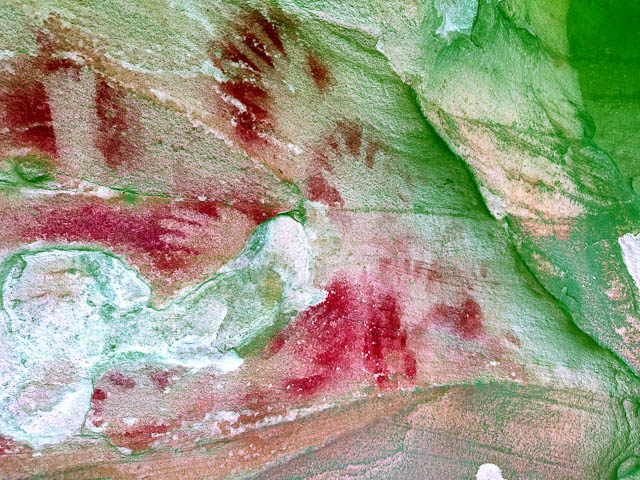
In the above photo, the top left stencil seems to be a foot. In the one below there is a circle.
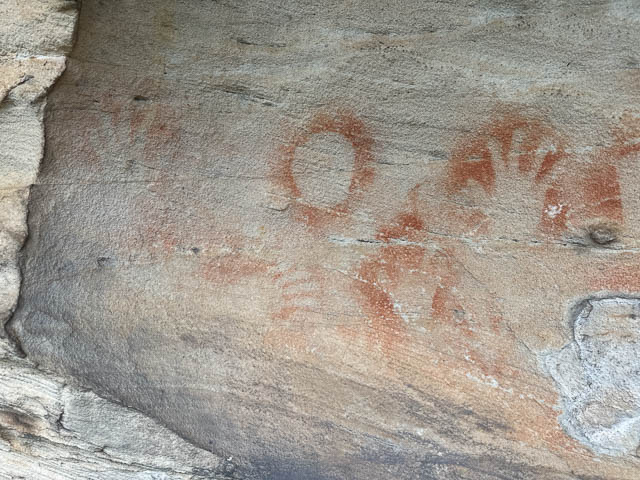
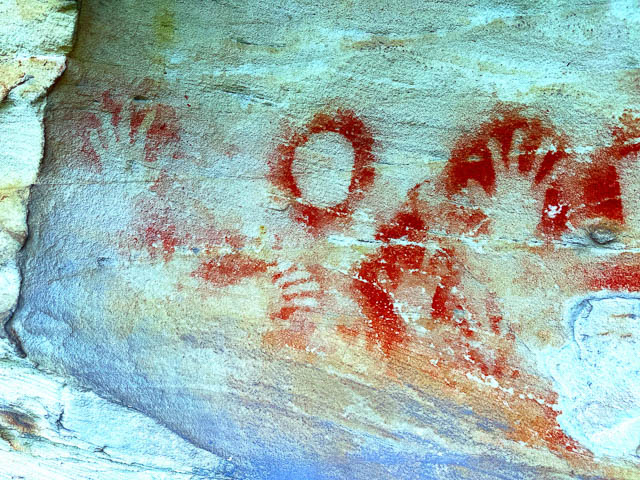
A view from further back –
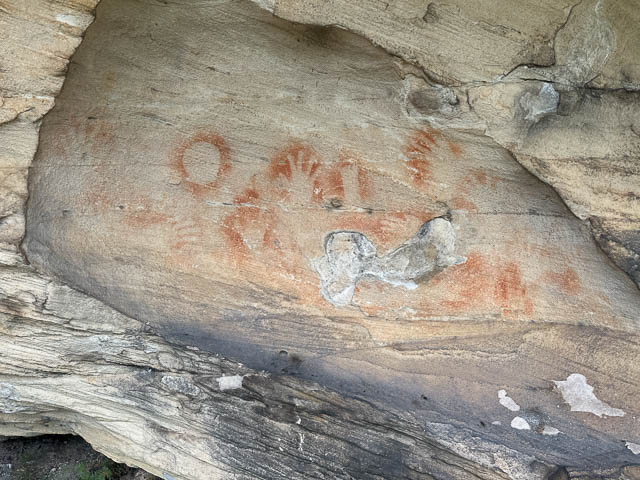
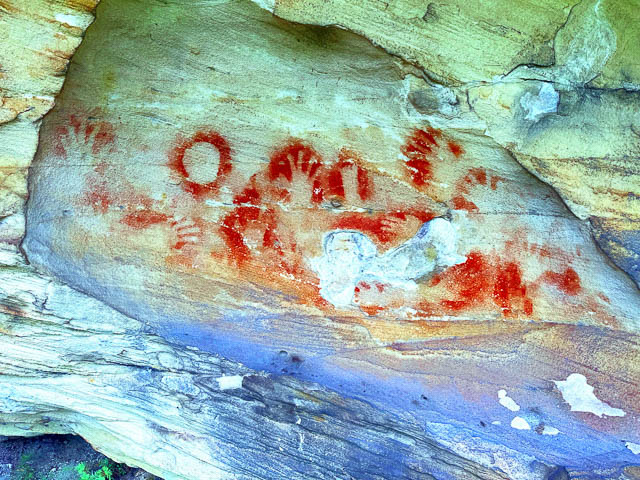
Nearby was a rock engraving site. There was a large whale.
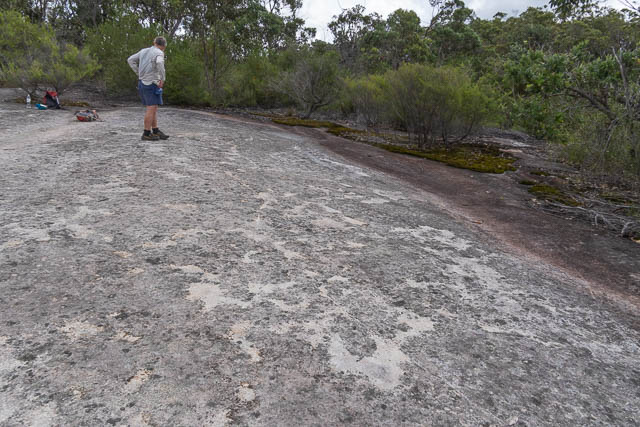
Near the head of the whale is spirit figure. It was very hard to discern, as the rain had stopped and the rock platform was now dry. We poured some water over it. Lucky for us there was a rock pool nearby. Here is what we could now see –
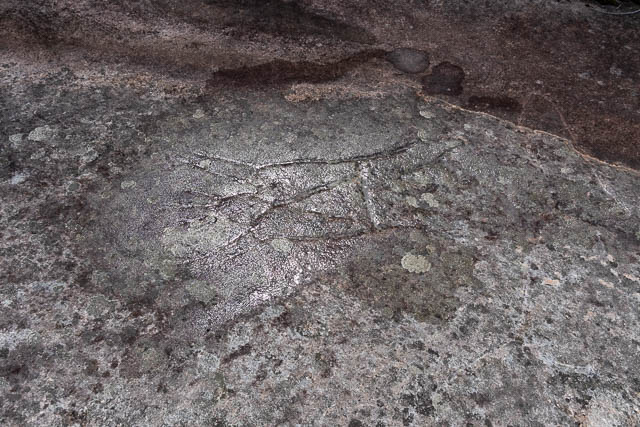
And there was another rock engraving site, not too far away. There is a large kangaroo engraving –
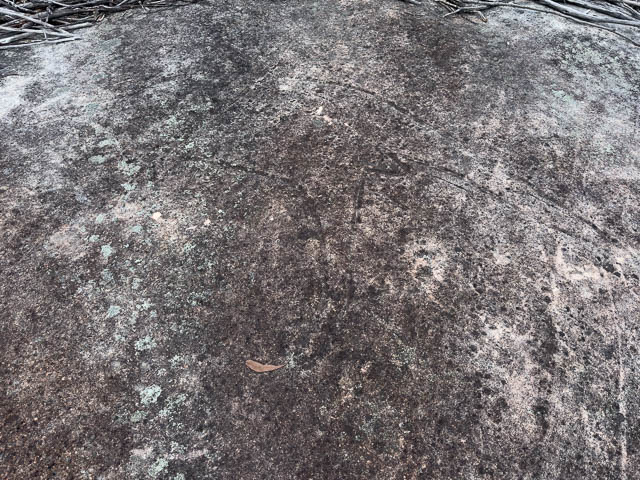
And a snake’s head –
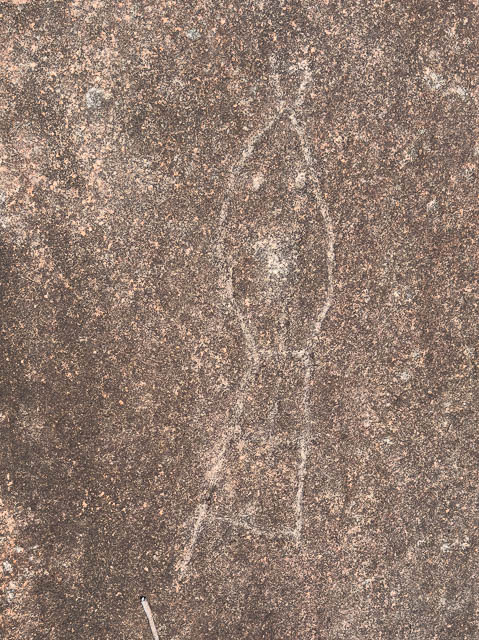
And this engraving –
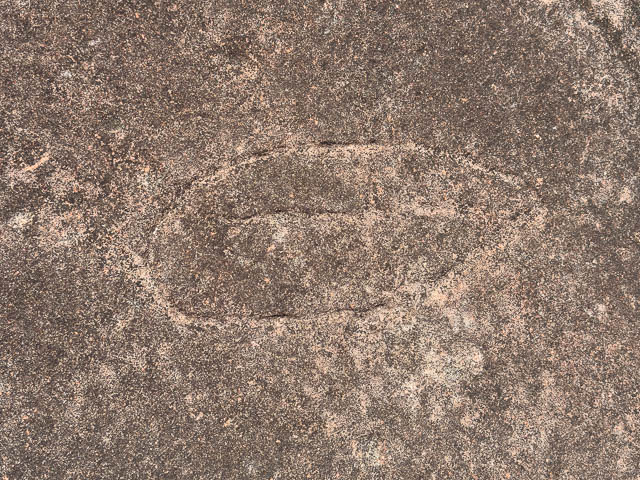
We also found a human fugue engraving – but it was not very clear, and the only rockpool was too shallow to extract water from.
Next we set off down the Natural Bridge Track.
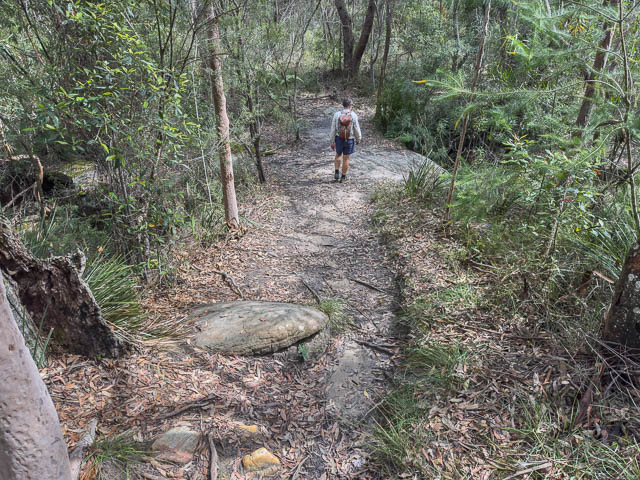
This took us down to a large natural arch in the creekbed. The track crosses via this arch.
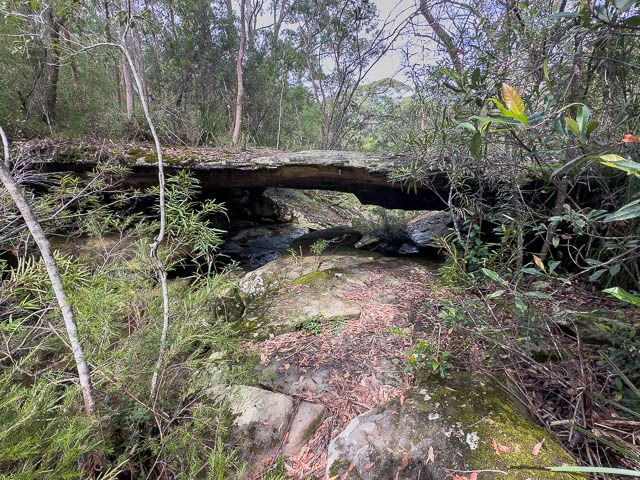
We then looked for a found another engraving site close to a fire road. It features a large turtle and a human figure.
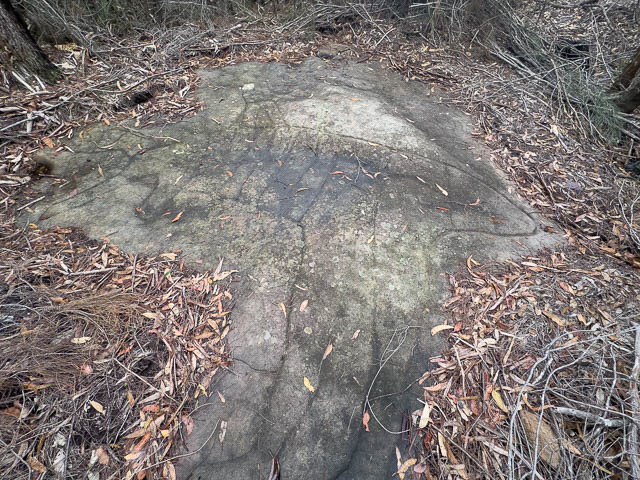
The human figure is overlayed on the turtle’s upper back.
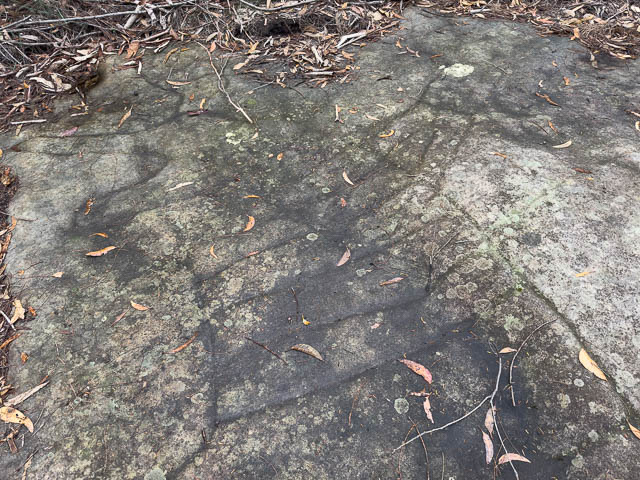
The human figure –
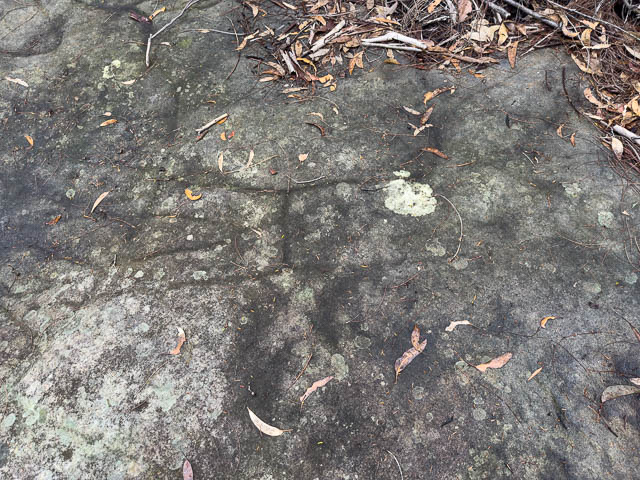
And nearby are some snake engravings –
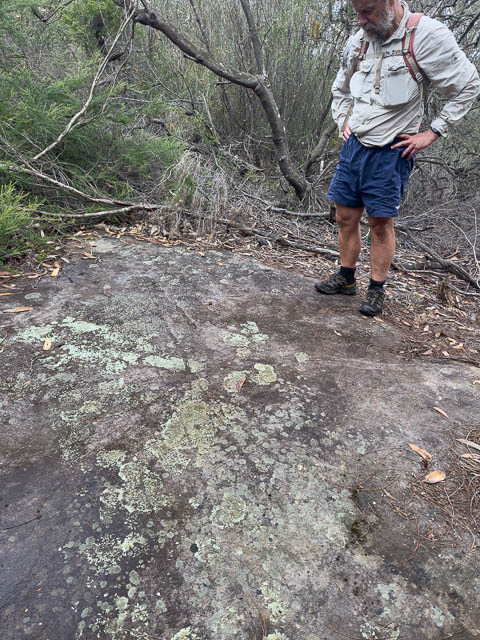
This had been a most interesting walk.
